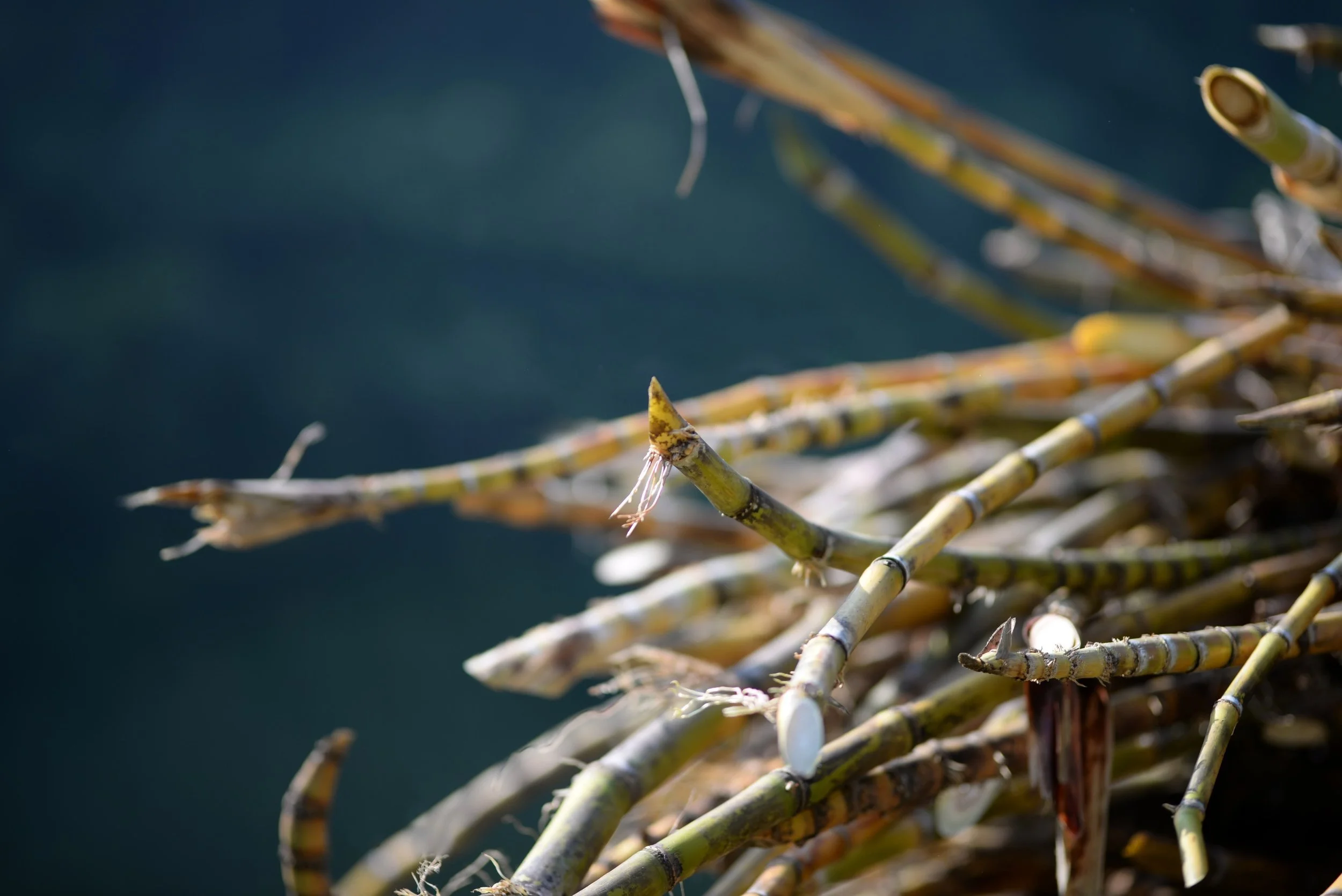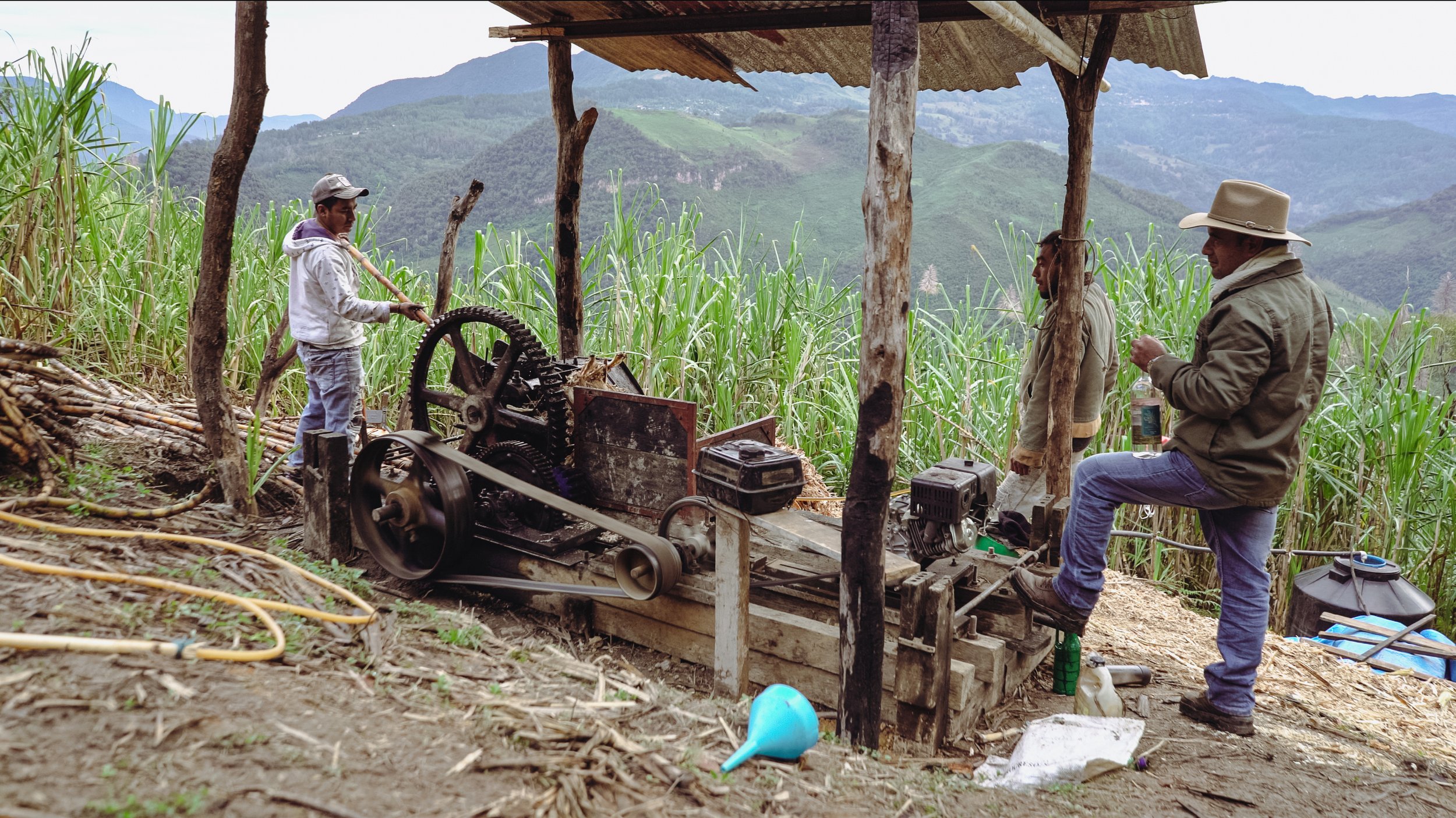
Production
High-quality, hand-harvested cane from the steep hillsides of the Oaxacan Cañada region. Distilled in handmade stills and tropical aged in both dry and humid bodegas.

Agriculture
The makers of Alambique Serrano practice traditionally organic agriculture, leading to healthy and robust cane plants while preserving the integrity of their farmland.
Harvest
Organic sugarcane is hand-harvested from the laderas (hillsides) above the palenque (distillery), from altitudes that range from 700 to 1200 meters (2,300 - 3,900 feet) above sea level. The harvested cane is transported by horse, donkey, or mule to the trapiche to be milled that day.
Milling
Once a mound of cane (approximately 10 tons) is transported to the trapiche (mill), the master distillers begin extracting the juice from the cane with a Campollo 9” mill. The juice is then filtered and, by the force of gravity, transported in a system of hoses that can be up to 2 km long before reaching the distillery. The Krassel family moves the trapiche from location to location based on the season.
Fermentation
Steel Tank
Once the fresh-squeezed cane juice arrives at the distillery, it is diverted to seven 1,200-liter stainless steel fermenting tanks that are stored outside of the distillery.
The juice begins to ferment on its own, thanks to the presence of an abundance of wild yeasts that start and maintain the fermentation. Depending on the climate, yeasts, and sugar content of the cane juice, fermentation will last between six and ten days.
Pine Vat
For the small batches destined to be distilled in the copper alembic stills, the freshly-squeezed cane juice is diverted into a small bodega housing three pine vats, where the juice is fermented with ambient yeasts.
Distillation
Column
The “Krassel Still” invented by Max is considered a continuous still. It houses eight plates in the distillation column, produces no heads or tails, and the distillation ABV is regulated by the temperature of the cooling chambers and the flow of the fresh caña juice to the boiling chamber. It is an engineering marvel that needs to be seen to fully comprehend.
Unlike the majority of Oaxacan aguardiente producers, the Krassel Family fires their still with diesel, rather than use the much more common method of powering their still with firewood. They believe this to be the best way to protect regional forests, which are increasingly threatened by deforestation.
Copper Alembics
Just recently, Rommel decided to explore distilling aguardiente in a more simplified system: with rustic copper pot alembic stills that are typical of mezcal production in the Oaxacan Valleys. The result is higher proof, heavier rums that are intensely aromatic and pleasantly oily.

Aging
The Krassel have four aging areas: a dry bodega located 5,600 feet above sea level, a humid bodega located in the cellar of the distillery at 2,000 feet above sea level; an even more humid bodega 100 meters from Rio Blanco, and a fourth, small cave that is exposed to the elements at the foot of Rio Blanco.
Both column still and pot still rums are aged in a combination of a range of barrels, including ex-whisky, ex-cognac, new French oak, ex-sherry and ex-mezcal.








